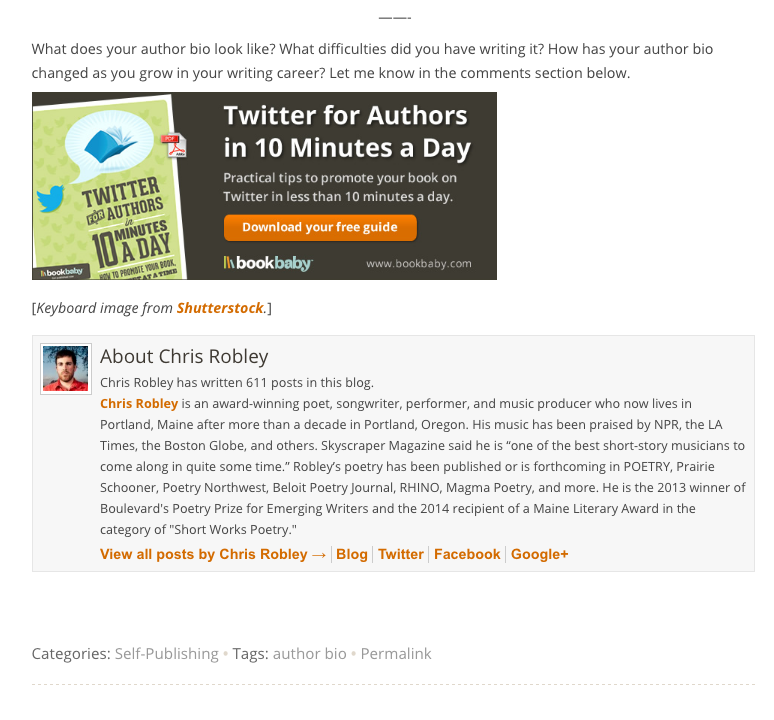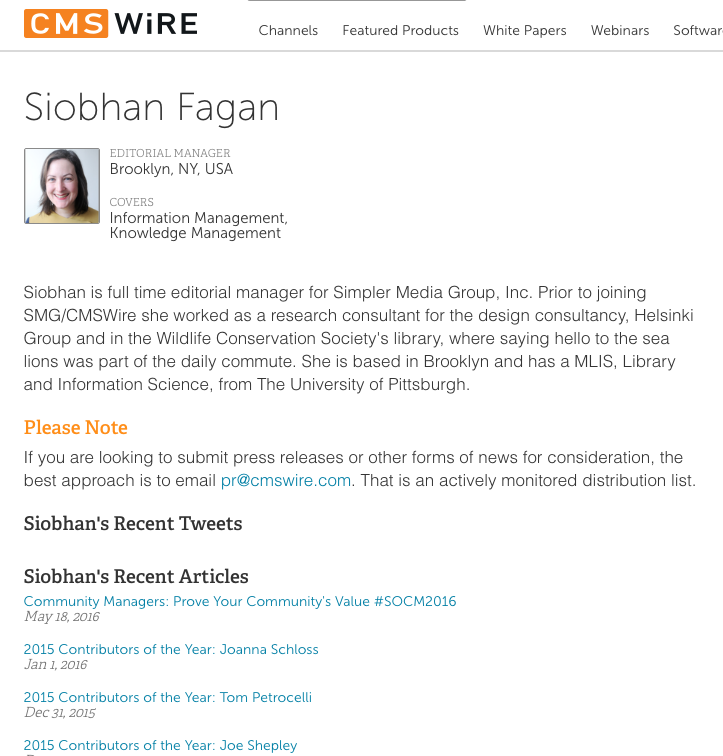
No one cares about this block of text author bio, but it takes up beachfront real estate on this post.
I spent ten years of my life writing on the internet, and for the first 3 years, got paid mostly in bylines.
Bylines, for those who don’t follow journalistic lingo, are a fancy name for the author’s name on a piece.
As an ego-driven bunch, writers care a lot about bylines. Writers reading other writers seek bylines out when they start reading a story (so to later know who to envy or disdain or both).
But readers don’t care about bylines, and most don’t even notice who wrote a piece. Bless the ones that do care, but for the most part, if readers notice anything about a story, they notice the publication.
If they share a story or mention it to a friend, they will say, “Oh, the Washington Post had a great story about how acetaminophen kills empathy.” They won’t remember the piece’s author Alice Ellis Nutt at all.
And the thing readers care even less about than bylines are author bios.
These are those boxes on a website that have a picture of the author from five or ten years previous (laziness + vanity).
The box lists all the publications they’ve written for, the books they’ve written, the conferences they’ve spoken at, and then some line at the end that when they are not writing about X topic, they like building doghouses out of shipping crate pallets to give to the local animal shelter, or some such irrelevant hobby factoid. And, of course, the writer’s Twitter handle.
These are fine little bones to throw to writers. But those bones should be buried on an author page, with a list of other stories they write. You should be able to get to that page by clicking the author’s name at the top of the story.
Here’s CMS Wire doing exactly that:

CMS Wire has a byline up at the top with a link to an author page. Thumbs up on this.
And here’s that author page:

A good and simple author page, with short bio, social account info and list of stories by that author.
But there’s a very unfortunate and lingering tendency to put this bio right at the end of the story.
Why unfortunate?
Well, when you’ve gotten a reader to finish a story, that reader is at a moment of indecision. What should I do next? Check email? Move the laundry from the washing machine to the dryer? Switch to Tinder?
As a publisher, what do you want them to do?
There’s a long list of things you want a happy reader to do, and reading the author’s bio should be somewhere on that list around #235.
What else should you prefer them to do?
Here’s 5 things that should be at the top of that list:
1. Follow that story
2. Read another story
3. Click on an ad that makes you good CPCs
4. Subscribe to your email list
5. Share that story on social
One thing we’ve learned from working with publishers is there is an inverse relationship between how far good content recommendations are from the end of a story and how many people click on them.
Every pixel between the end of the story and the recommendations lowers the numbers of readers who click through to other stories.
Conversely, there’s a direct relationship between readers who read more than one story on a visit and readers who then come back to your site.
So, if you want fewer readers to come back to your site, let your authors write essay-length bios, extolling the schools they attended, the companies they worked for and the honor societies they were in in high school. Then wrap this in a big box at the end of the story.
For those of you who want readers to read more, sign up for an email list and share a story, bury those author bios on an author’s page.
Your readers will thank you for that using the currency of reading more.